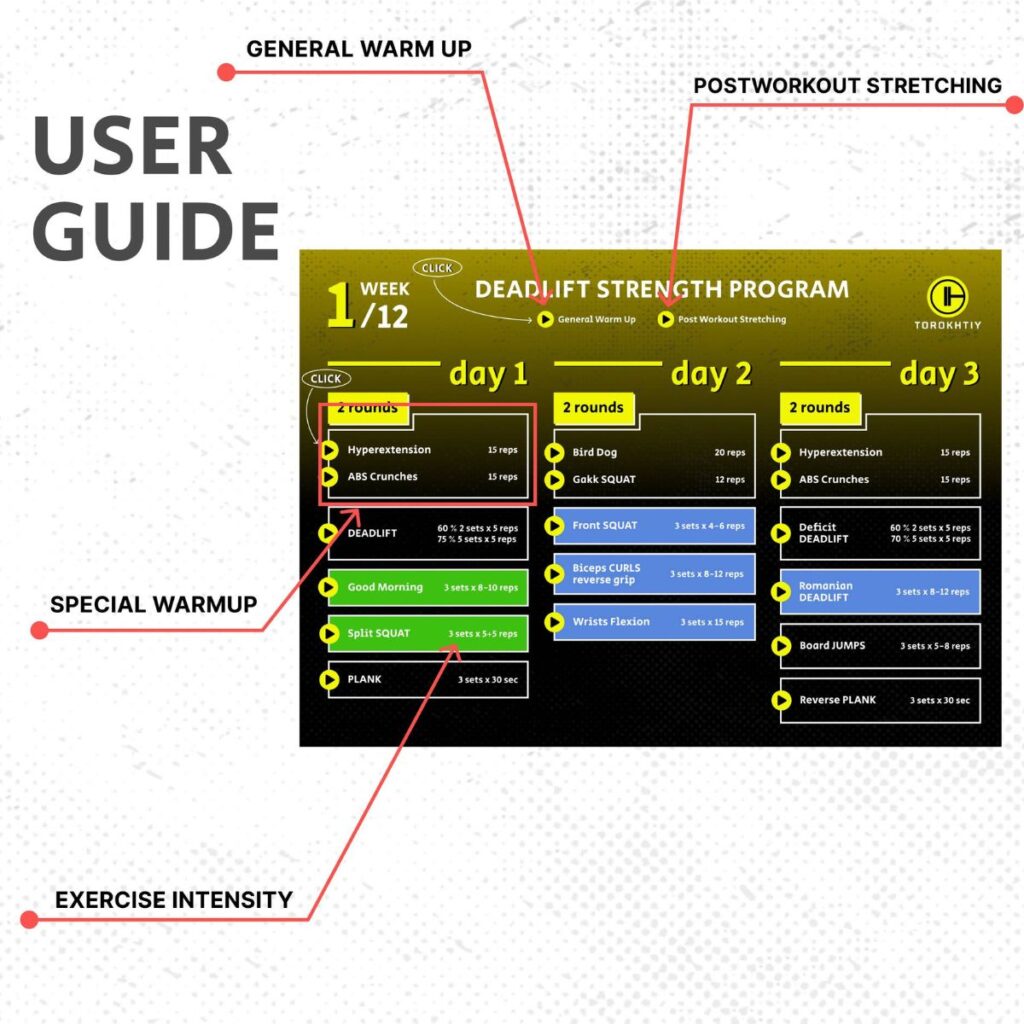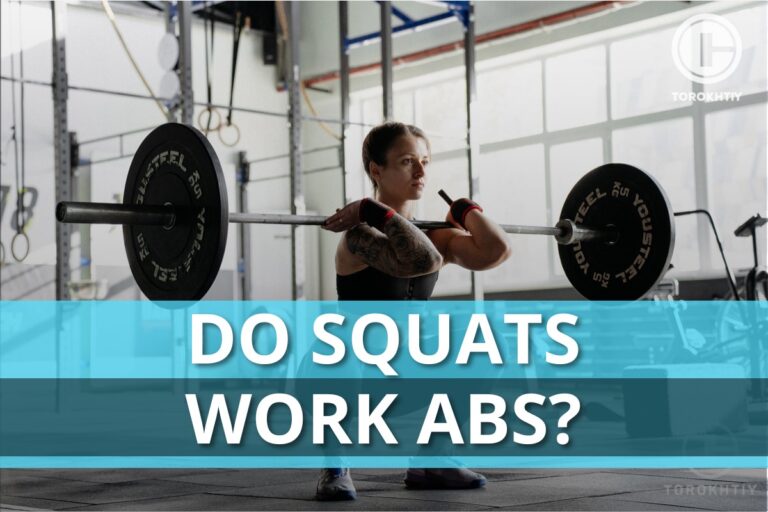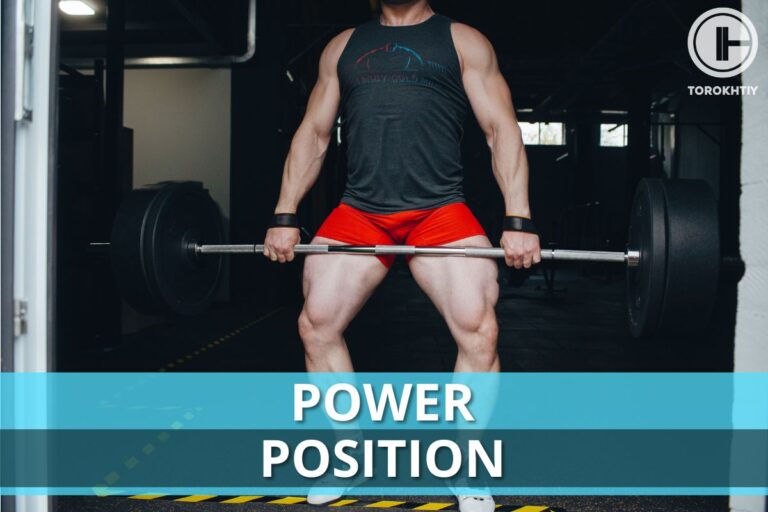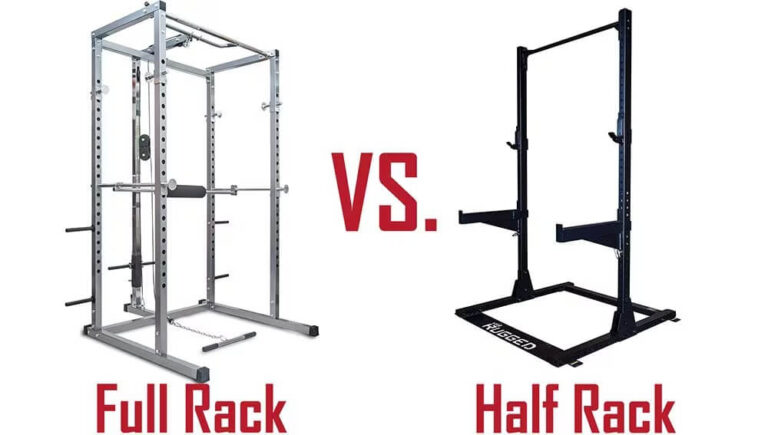Deadlift Starting Position and the Benefits of Proper Form
Using the proper deadlift starting position is vital if you wish to avoid injuries. The deadlift provides numerous benefits, helping you sprint faster, jump higher, climb, and throw better. Of course, it also improves your overall power.
Unfortunately, many amateur athletes are too hasty when starting this workout. They want to do it from day one, even if they have limited gym experience. In this article, we’ll explain how to start deadlifting and what benefits you can get from it.
The traditional deadlift starting position requires that you stand under the barbell and have a shoulder-wide grip. Before doing the exercise, your shins should touch the bar, and you need to straighten the back to prevent injuries.
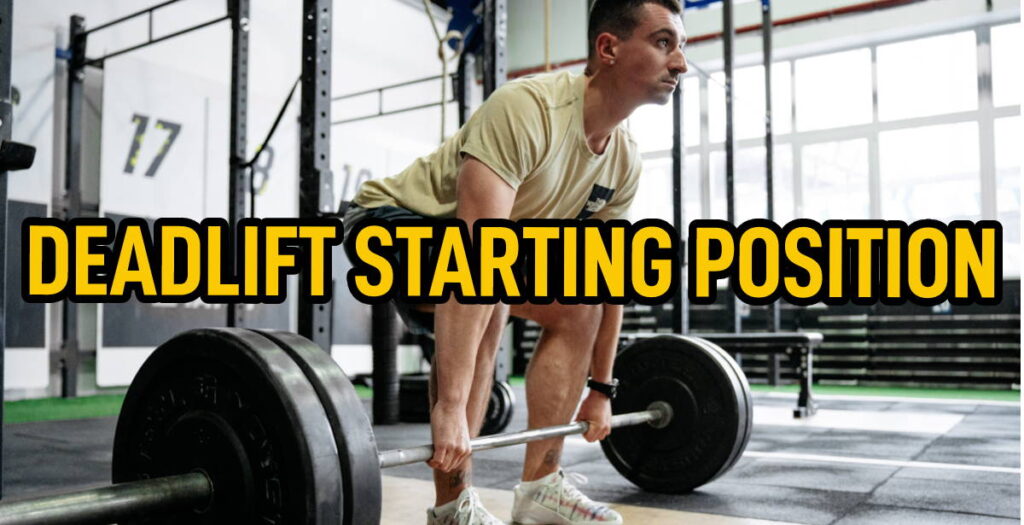
How to Start Deadlifting?
The deadlift is one of the crucial exercises if you wish to improve your physique. It’s especially fantastic for posterior chain muscles and thighs. However, it can be hard to execute and requires a certain level of preparation.
Before you start doing this type of workout, we suggest you learn the hip hinges. This exercise is somewhat similar to the deadlift, just without the weights and squatting down. It will teach you how to move your hips when working out, which is crucial for avoiding injuries.
We also suggest you strengthen all the muscles needed for the deadlift with lower-intensity exercises. This would ensure you can maintain a good posture when doing the deadlifts without unnecessary yanking or twisting movement.
What Are the Forms of Deadlifting?
Given the importance of this exercise, it isn’t surprising we have so many variations. Depending on the version you’re using, you’ll have a different impact on the muscles. Athletes often change the types to target a certain weakness or add flavor to their workouts.
Here are some of the most common forms of deadlifting:
- The conventional deadlift
- The sumo deadlift
- The Romanian deadlift
- The deficit deadlift
- The trap bar deadlift
- The snatch grip deadlift
- The rack pull

What Is the Starting Position in Deadlifting?
Now, let’s revise all these variations and how to properly execute each one of them!
The Conventional Deadlift
The conventional deadlift starting position requires that you keep your feet in a normal standing position. Hands are just outside the feet, at hip width. During the exercise, your back is kept straight, and your chest is facing forward.
Keep in mind there’s some difference between clean vs deadlift starting position. With the standard deadlift, your shoulders aren’t that far forward, and your hips are a bit higher by comparison.
The Sumo Deadlift
The thing that separates the sumo deadlift starting position from other variations is foot positioning. The feet are noticeably spread apart in a sumo-like stance. During the lifting motion, the back is relatively straight, and there’s less movement compared to other variations and, specifically, the conventional deadlift.
With this type of exercise, there’s much less emphasis on the posterior chain. On the other hand, the sumo deadlift loads more weight on the inner thighs and quads.
The Romanian Deadlift
When doing the Romanian deadlift, you need to keep the same hand and feet spread as with the conventional deadlift, at hip-width apart.
The thing that separates this exercise from the rest is the fact you’re not lifting the barbell from the ground. Instead, you’re starting with the bar in your hands, and you do a rep by bending the hips so that the barbell comes below your kneecaps. Then, you lift the barbell up in the starting position without it ever touching the floor.
The Romanian deadlift shoulder position requires that you keep your body straight. Your spine should be flat for optimal movement.
The Deficit Deadlift
This variation of the exercise has the same deadlift start position as the conventional one. Your hands and feet are normally spread, and you do a similar movement. The main difference is that your feet should be on a mat or weights while the barbell is at the floor level. The elevation should be 2 to 4 inches.

The deficit deadlift is especially fantastic for learning the right posture for the conventional deadlift. If you have trouble getting tight during the standard exercise, you use this variation to improve your form.
The Trap Bar Deadlift
The main thing that differentiates this exercise from the rest is the fact you’re using a different barbell. Instead of the usual bar, you’ll need a hexagonal-shaped barbell.
Your initial posture is basically the same as with the traditional variation. However, instead of placing your hands in front of you, you’ll need to hold the side handles on the barbell. Due to the bar’s design, your back will be more upright, which reduces the stress on this part of the body.
The Snatch Grip Deadlift
The snatch grip deadlift is a less popular variation of the exercise. People rarely use it because it can be hard to execute compared to other types of deadlifts.
When doing the snatch grip deadlift, your feet have the usual hip-wide spread. The thing that differentiates it is the wide arm grip and the complexity of movement. The snatch grip deadlift head position is the same as with other deadlifts, forcing you to look at the floor in front of you.
The Rack Pull
As the name implies, with this type of deadlift, you’re pulling the barbell of a rack instead of the floor. This means that the range of motions is much shorter compared to the usual exercise.
The best thing about the rack pull is that it improves your deadlift control. As you don’t have to go all the way down, it’s much simpler than the traditional variation.
Why Is It Important to Perform the Deadlift in the Starting Position Correctly?
The deadlift is one of the trickier exercises to perform. During workouts, you need to have a flat back and to work the core. Rounding your back during the deadlift is extremely risky, often resulting in injuries.
When done the right way, the exercise engages most of your muscle groups. It’s especially fantastic for guys who want to build their overall mass and improve core stability. Aside from providing gym benefits, it’s a type of workout that can help in your daily life, teaching you how to move heavy stuff around.

What Are the Features of the Starting Position in Deadlifting?
Generally speaking, most deadlifts have a similar body placement. Athletes should keep their backs straight for as long as possible when going up and down. For the most part, gym-goers do repetition with their legs, hips, and core.
Here’s a better explanation of what each body part should do during the deadlift:
Arms and Hands
In most types of deadlifts, you need to keep your hands and arms at the hip-width, just outside your feet. However, there are variations, such as trap bar and snatch grip, where the placement is a bit different. During the reps, your arms should be firm, only serving to hold the barbell.
Feet
Similar to hands, the feet should be in a normal standing position, being slightly spread. Rare variations, such as the sumo deadlift, force you into a wider spread.
Legs
Legs are crucial for executing the first part of the rep. The workout activates your glutes, hamstrings, and quads through muscle shortening and lengthening. Keep in mind there are differences in how certain deadlift variations affect leg muscles (for example, snatch grip is better for building hamstrings).
Head
During the deadlift, you shouldn’t try to look straight forward or straight down. Ideally, you should be looking at the floor, 7 to 10 feet in front of you.
Shoulders
Shoulders primarily serve to stabilize your movement. They should be placed slightly in front of the bar, and you don’t have to retract them as you pull the barbell. When finishing a rep, your shoulders need to be in a normal, upward position.

Back
The best way to stay safe during the deadlift is by keeping your back straight. Although this will feel unnatural and very uncomfortable, there shouldn’t be any bending movement during the reps.
Hips
Like with other parts of your body, you need to find the optimal position for the hips. They shouldn’t be too high or too low if you wish to perform the deadlift properly. Among others, mastering hip movement is especially important for keeping your back straight, thus avoiding injuries.
🔻12-Week Deadlift Strength Program by Oleksiy Torokhtiy
Unlock your true potential with our Deadlift Strength Program!
Designed for athletes by 2-time Olympian Oleksiy Torokhtiy, this 12-week program focuses on enhancing your deadlift strength, strengthening your back and legs.
Program details:
- 12 weeks;
- 3 days / week;
- 45-120 minutes per session;
- 50+ specific exercises;
- Focus on New Result in Deadlift;
- One-time payment, no recuring payments;
- Full access to all training content.
Start now and boost your deadlift results!
Where Should You Feel a Deadlift?
The deadlift is a whole-body workout. The exercise activates your back, hips, hamstrings, glutes, core, and trapezius. To be specific, people use it to strengthen several muscle groups at once. The impact on muscles will vary depending on the type of deadlift. Furthermore, certain variations will be more lenient for your back.
When you start pulling the barbell up, you’ll first feel an impact on your hamstrings and quads. During this time, your back will be straight, having the biggest impact on the lower back. As the barbell goes above your knees, you’ll start feeling pressure in the upper back. As you’re finishing the rep, you’ll feel burning in the glutes.
When putting the barbell down, you’ll feel a lot of pressure on traps and lats. It’s necessary to strengthen these muscles to retain full control of weights. As you slowly put the barbell down, you’ll feel an intense burn in your hamstrings and quads.
FAQ
Should You Tuck In Your Thumb During the Deadlift?
Ideally, you should use a normal grip when doing the deadlift. Hook grip, where you tuck in your thumb between other fingers, is beneficial for lifting higher weights, but can also lead to thumb injuries.
Why Do the People Roll the Bar Before the Deadlift?
Rolling the barbell before the deadlift is an excellent way of getting into position without having to move the weights around. Specifically, it helps you get your hips and hamstring into position and engage your back beforehand.
Should You Start the Deadlift From the Floor?
Choosing to deadlift from the floor mostly depends on your constitution. For example, some people might find it hard to reach the bar or have trouble with their hips when doing the standard deadlift.
Conclusion
Using the proper deadlift starting position is crucial for avoiding injuries and getting the most out of your workout. Depending on your goals, you might choose between different variations of the exercise, each having a different impact on your body.
During the convention deadlift, your arms and feet should be parallel to each other and hip-width. It’s vital that you keep your back straight to avoid damage to your muscles.
What is your favorite type of deadlift? How often do you perform this exercise? Share it in the comments below!
Also read:
- Is a 500 LB Deadlift Good
- How to Improve Deadlift Grip Strength
- Deadlift Workout Sets and Reps
- Rounded Lower Back Deadlift
- Deadlift Bar Weight
- Deadlift Accessory Exercises
- Is Sumo Deadlift Cheating
References:
- Electromyographic activity in deadlift exercise and its variants // NCBI: https://www.ncbi.nlm.nih.gov/pmc/articles/PMC7046193/
- The Efficacy of Partial Range of Motion Deadlift Training: A Pilot Study // Scientific & Academic Publishing: http://article.sapub.org/10.5923.j.sports.20221201.03.html
- TWhat Is Proper Deadlift Form—And What Variation Is Best for You? // SELF: https://www.self.com/story/how-to-do-a-deadlift
- EHow To Deadlift: The Complete Guide to Perfect Form // AOM: https://www.artofmanliness.com/health-fitness/fitness/how-to-deadlift/
- What Muscles Do Deadlifts Work? // Healthline: https://www.healthline.com/health/fitness-exercise/deadlift-muscles-worked
- The Deadlift and Its Application to Overall Performance // NSCA: https://www.nsca.com/education/articles/tsac-report/the-deadlift-and-its-application-to-overall-performance/
Why Trust Us?
With over 20 years in Olympic Weightlifting, our team does its best to provide the audience with ultimate support and meet the needs and requirements of advanced athletes and professional lifters, as well as people who strive to open new opportunities and develop their physical capabilities with us.
By trusting the recommendations of our certified experts in coaching, nutrition, dietology, and sports training programming, as well as scientific consultants, and physiotherapists, we provide you with thorough, well-considered, and scientifically proven content. All the information given in the articles concerning workout programming, separate exercises, and athletic performance, in general, is based on verified data. We ensure that you can rely on our professionals’ pieces of advice and recommendations that can be treated as personalized ones which will benefit you and fully meet your needs.
The product testing process is described in more detail here
Author: Sergii Putsov
Head of Sport Science, PhD
Best Results: Snatch – 165 kg,
C&J – 200 kg
Sergii Putsov, Ph.D., is a former professional weightlifter and National team member, achieving multiple medals in the 94 kg weight category at national competitions. With a Master’s degree in “Olympic & Professional Sport Training” and a Sport Science Ph.D. from the International Olympic Academy, Greece, Sergii now leads as the Head of Sport Science. He specializes in designing training programs, writing insightful blog articles, providing live commentary at international weightlifting events, and conducting educational seminars worldwide alongside Olympic weightlifting expert Oleksiy Torokhtiy.

